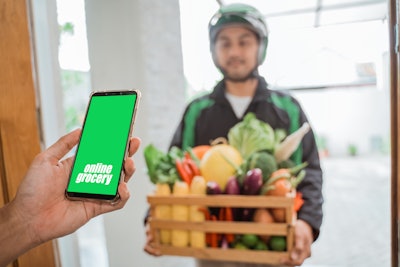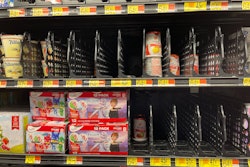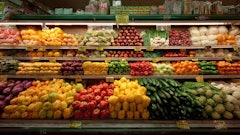
The total U.S. online grocery market ended July with $7.9 billion in monthly sales, a 9.2% increase over last year. Delivery sales surged 22% in July, aided by continued promotional efforts. Ship-to-home also posted strong results, climbing 6%, and pickup held steady year-over-year, according to the Brick Meets Click/Mercatus Grocery Shopper Survey.
“Walmart and Instacart aren’t the only players using deep discounts to boost delivery demand,” says David Bishop, partner at Brick Meets Click. “Amazon, for example, in July offered a 90-day free Prime membership trial instead of the usual 30 days, along with unlimited grocery delivery. Similarly, DoorDash and Uber Eats are maintaining low or no delivery fees to increase their market share.”
Key takeaways:
- Delivery’s dramatic gains in July benefited from ongoing efforts by key players to grow their delivery businesses over the last several months.
- Both supermarkets and mass saw year-over-year increases in their MAU bases in July. Supermarket’s base grew twice as fast as last year, up about 7%, and mass posted a nearly 8% increase. Trends across the three receiving methods were mixed. Delivery’s MAU base expanded by more than 10% versus last year, Ship-to-home’s expanded by almost 4%, and Pickup’s contracted slightly, down by less than 2%.
- Overall e-grocery order volume for July rose approximately 5% compared to the prior year. Delivery orders surged nearly 20% in the month, due to both more users and more frequent ordering by those users. Meanwhile, pickup order volume fell 3% vs. July 2023 due to lower order frequency among a contracting MAU base. Growth in ship-to-home’s user base offset a dip in order frequency, resulting in a 2% gain in order volume during the month.
- Composite spending per order across all three methods (delivery, pickup and ship-to-home) increased almost 4% in July compared to a year ago. Average order values (AOV) for ship-to-home climbed the most, growing 4% year-over-year, while pickup and delivery trailed, increasing by 3% and 2% respectively. AOV for the mass format finished up over 3% while Supermarkets were flat vs. year ago.
“Intense competition in grocery delivery promotions is eroding regional grocers' control over customer interactions. While third-party marketplaces may boost short-term order volume gains, they also make it harder for grocery retailers to achieve the economies of scale needed to reduce operating costs,” says Mark Fairhurst, chief growth officer at Mercatus. “I’m not sure many grocers would jump at the opportunity to put a farmer’s market in their store parking lot, yet many are willing to do something similar when it comes to relying on marketplaces for their online business.”



















